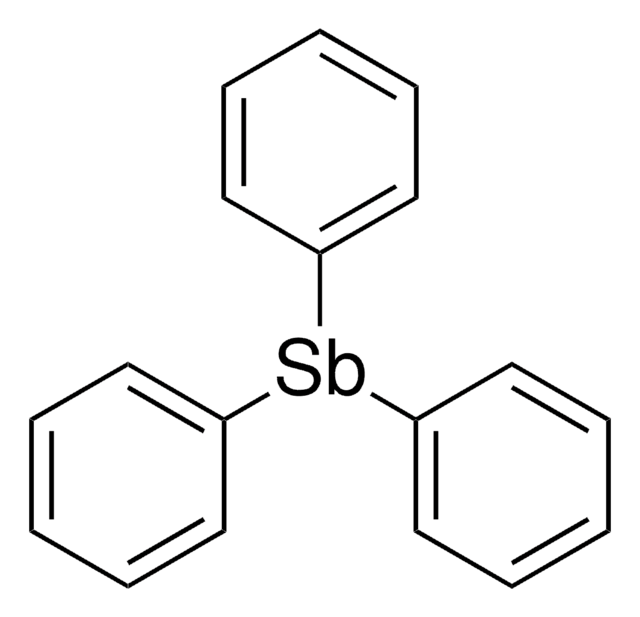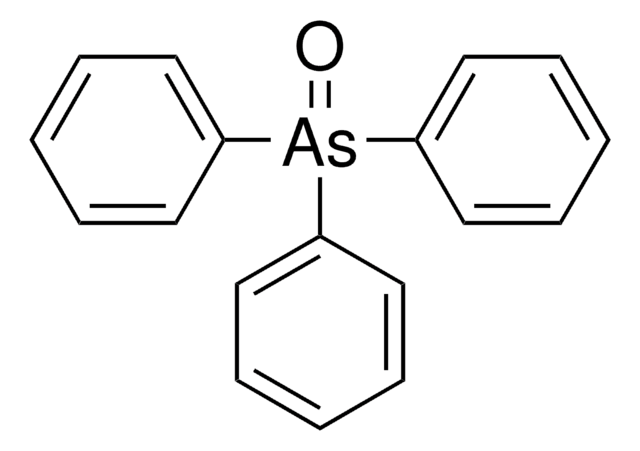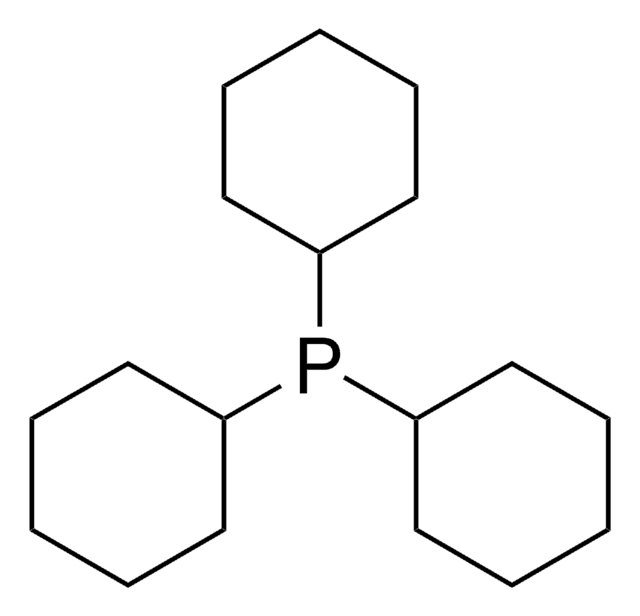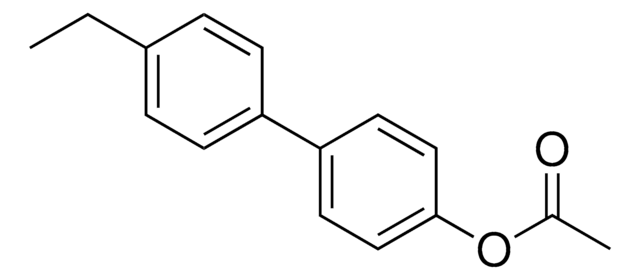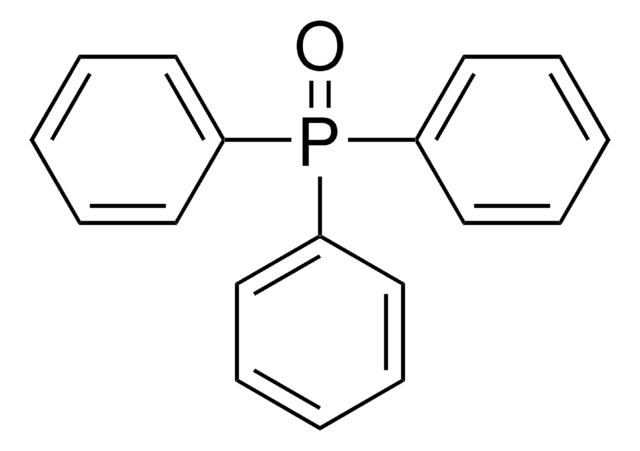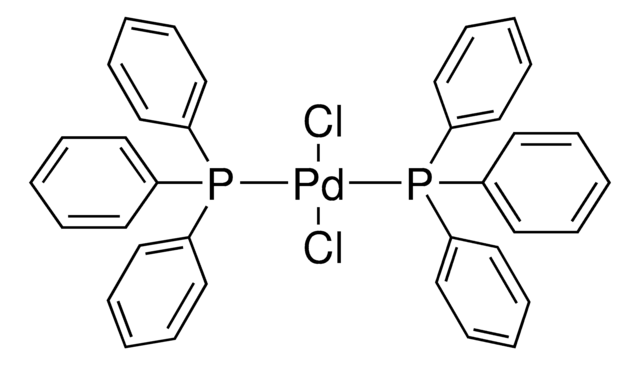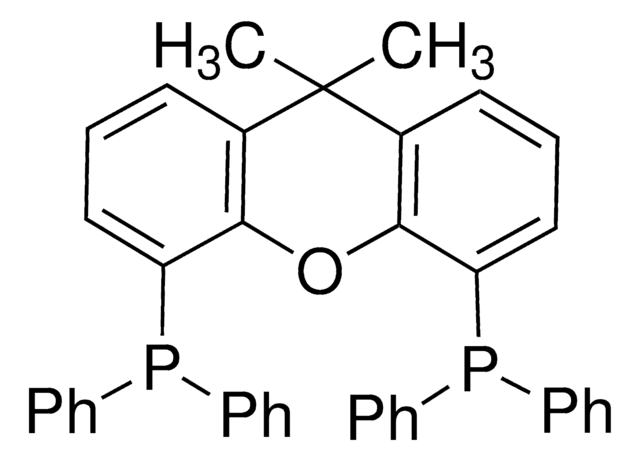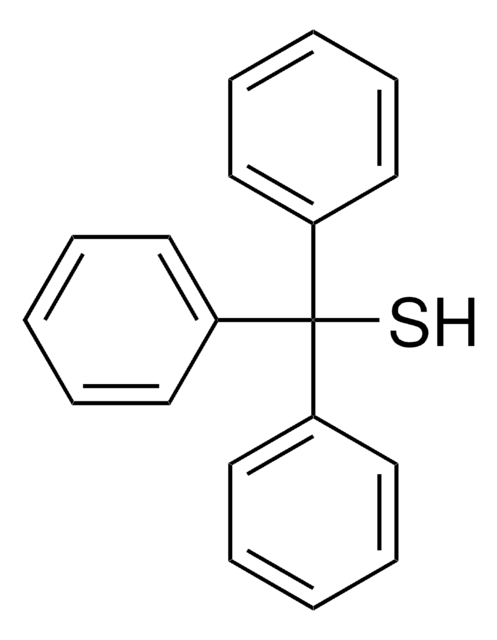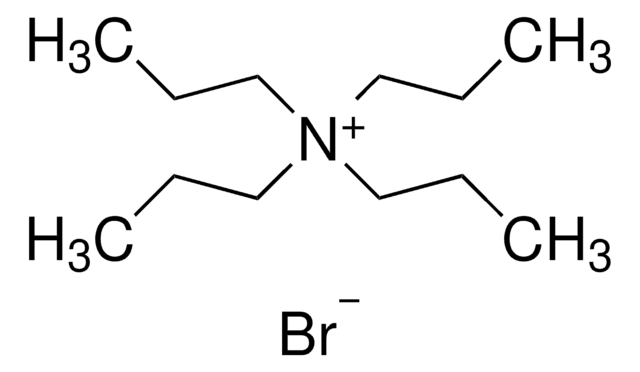All Photos(1)
About This Item
Linear Formula:
(C6H5)3As
CAS Number:
Molecular Weight:
306.23
EC Number:
MDL number:
UNSPSC Code:
12352103
PubChem Substance ID:
NACRES:
NA.23
Recommended Products
Quality Level
Assay
97%
form
solid
reaction suitability
reagent type: catalyst
mp
58-61 °C (lit.)
SMILES string
c1ccc(cc1)[As](c2ccccc2)c3ccccc3
InChI
1S/C18H15As/c1-4-10-16(11-5-1)19(17-12-6-2-7-13-17)18-14-8-3-9-15-18/h1-15H
InChI key
BPLUKJNHPBNVQL-UHFFFAOYSA-N
Looking for similar products? Visit Product Comparison Guide
Related Categories
General description
Triphenylarsine is an organoarsenic compound mainly used as a ligand and reagent in organic synthesis. It can also be used as a vapor deposition precursor to prepare nanomaterials.
Application
Triphenylarsine can be used:
- As a CVD precursor to prepare As-doped carbon nanotubes with enhanced activity and long-term durability for the oxygen reduction reaction.
- As an arsenic source to synthesize InAs nanocrystals.
- As a ligand to accelerate the reaction rate of the Stille coupling reaction.
- To prepare trichromophoric sensitizer for dye-sensitized solar cells.
Signal Word
Danger
Hazard Statements
Precautionary Statements
Hazard Classifications
Acute Tox. 3 Inhalation - Acute Tox. 3 Oral - Aquatic Acute 1 - Aquatic Chronic 1
Storage Class Code
6.1A - Combustible acute toxic Cat. 1 and 2 / very toxic hazardous materials
WGK
WGK 3
Choose from one of the most recent versions:
Already Own This Product?
Find documentation for the products that you have recently purchased in the Document Library.
Stanisław Popiel et al.
Analytica chimica acta, 837, 52-63 (2014-07-09)
Novel solid-phase microextraction (SPME) fibres containing methyl, ethyl, butyl acrylate and methacrylate were first prepared by a sol-gel technique and investigated for determination of selected organoarsenic compounds (lewisite, methyldichloroarsine, phenyldichloroarsine, diphenylchloroarsine and triphenylarsine) from water samples. The influence of sorption
Veronika Sele et al.
Journal of trace elements in medicine and biology : organ of the Society for Minerals and Trace Elements (GMS), 30, 171-179 (2015-01-27)
In the present study liver samples (n=26) of Northeast Arctic cod (Gadus morhua), ranging in total arsenic concentrations from 2.1 to 240mg/kg liver wet weight (ww), were analysed for their content of total arsenic and arsenic species in the lipid-soluble
Our team of scientists has experience in all areas of research including Life Science, Material Science, Chemical Synthesis, Chromatography, Analytical and many others.
Contact Technical Service